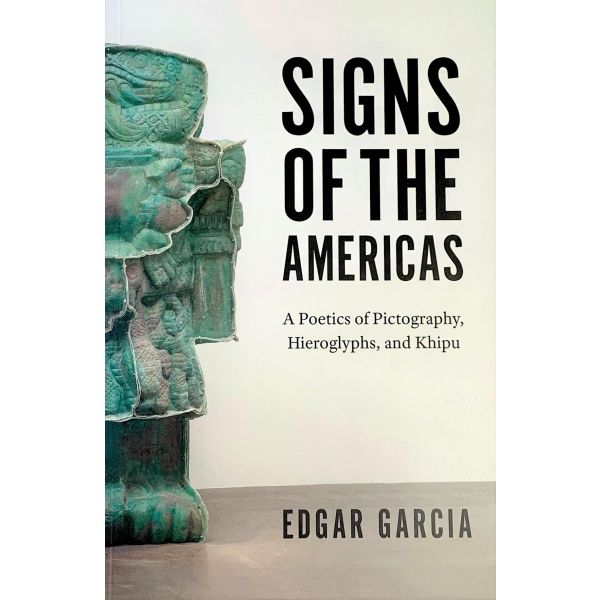Signs of the Americas
A Poetics of Pictography, Hieroglyphs, and Khipu
By Edgar Garcia
Indigenous sign-systems, such as pictographs, petroglyphs, hieroglyphs, and khipu, are usually understood as relics from an inaccessible past. That is far from the truth, however, as Edgar Garcia makes clear in Signs of the Americas. Rather than being dead languages, these sign-systems have always been living, evolving signifiers, responsive to their circumstances and able to continuously redefine themselves and the nature of the world.
Garcia tells the story of the present life of these sign-systems, examining the contemporary impact they have had on poetry, prose, visual art, legal philosophy, political activism, and environmental thinking. In doing so, he brings together a wide range of indigenous and non-indigenous authors and artists of the Americas, from Aztec priests and Amazonian shamans to Simon Ortiz, Gerald Vizenor, Jaime de Angulo, Charles Olson, Cy Twombly, Gloria Anzaldúa, William Burroughs, Louise Erdrich, Cecilia Vicuña, and many others. From these sources, Garcia depicts the culture of a modern, interconnected hemisphere, revealing that while these “signs of the Americas” have suffered expropriation, misuse, and mistranslation, they have also created their own systems of knowing and being. These indigenous systems help us to rethink categories of race, gender, nationalism, and history. Producing a new way of thinking about our interconnected hemisphere, this ambitious, energizing book redefines what constitutes a “world” in world literature.
About the Author: Edgar Garcia is the Neubauer Family Associate Professor in the Department of English at the University of Chicago.
PAPERBACK (January 23, 2020)
ISBN-13: 978-0226659022
Dimensions: 6 x 0.7 x 9 inches
288 pages
11 color plates, 31 halftones
In August 2019, Dumbarton Oaks was the first to bring together examples of Wari, Inka, and Colonial khipu in our exhibit Written in Knots.


